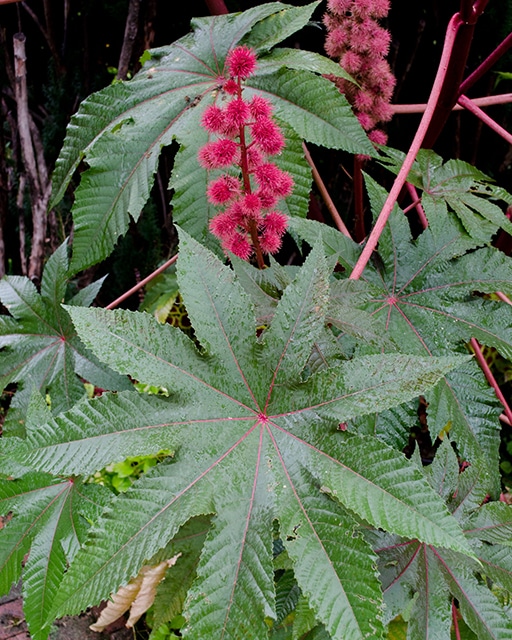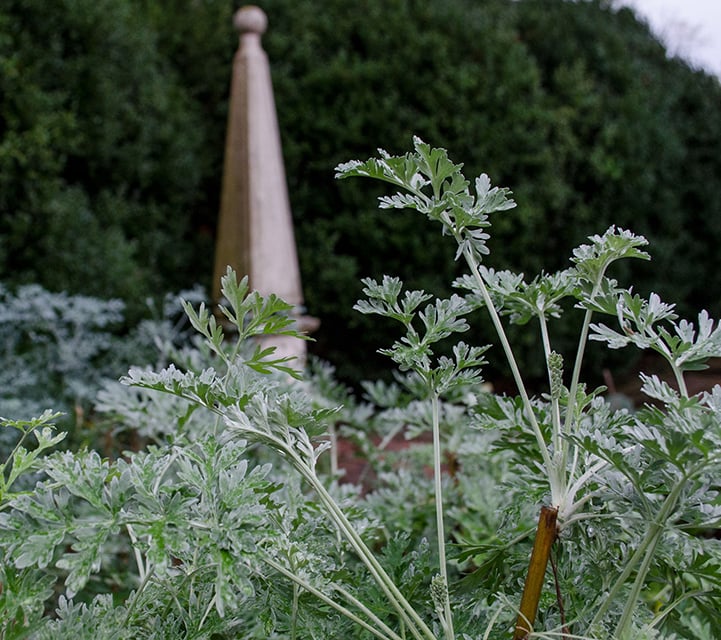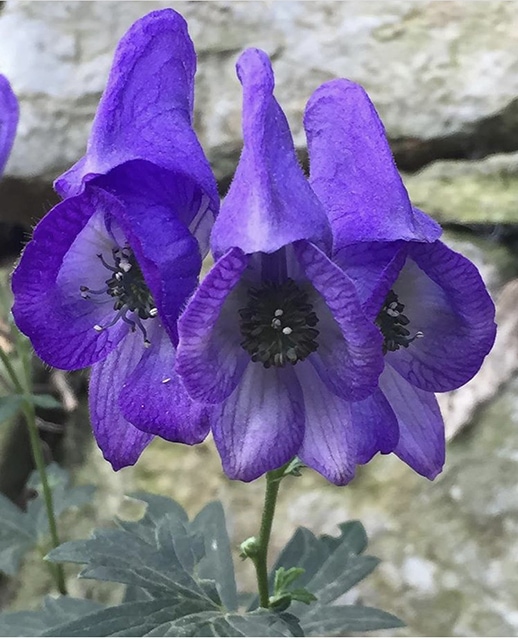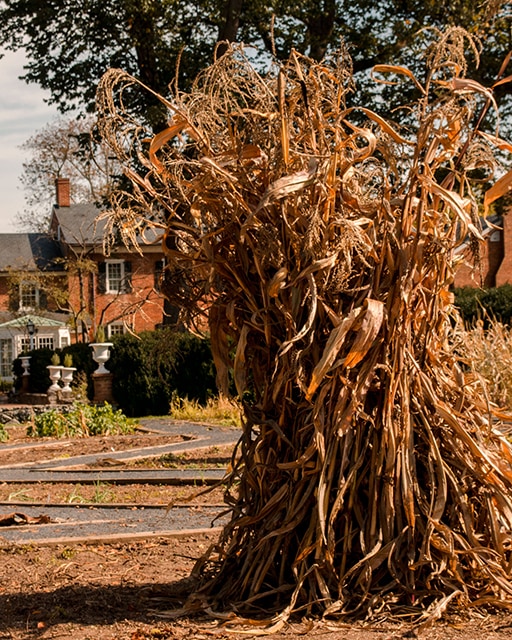Autumn is upon us, Halloween is around the bend, and all is well in the gardens. Probably. Maybe.
By Horticulturist Chantal Ludder
Perhaps you are the sort of person who is content to enjoy the colorful leaves and nothing more sinister than a cup of spiced cider.Or, perhaps, you’ve caught a bit of the Halloween mischief, and want to hear some stories about the most dreadful and ghastly plants growing in the MSV gardens. Come with me.
Have you seen the Castor Beans by the Eagle Statue? I grow them myself. Their official botanical name (if we must be formal) is Ricinus communis – a fun name for such a dramatic plant. Castor Beans have huge, palmate shaped leaves, and can easily grow upwards of six feet over the course of one summer. They are a great addition to the back of a mixed border, or can stand alone in a large pot. Just don’t forget, their ominously patterned seeds contain ricin, which is a deadly poison.
In 1978 BBC journalist (and communist defector) Georgi Markov found himself jabbed in the leg by an umbrella, held by a nondescript man walking across London’s Waterloo Bridge. Things did not go well for Georgi. After an agonizing death several days later, pathologists discovered a small injectable metal pellet in his leg. The pellet contained ricin. Oddly enough, we also derive castor oil, which has been historically used to help with digestive complaints, from the exact same plant.
Was that too sinister? Perhaps we should move on to the Herb garden and look at the Wormwood instead. Wormwood (Artemisia abisinthium) is a beautiful, woody perennial herb with silver foliage and a pungent, medicinal smell. It is a great addition to any herb garden, or can provide a sharp visual contrast to plants with darker foliage. It is also one of the many ingredients in absinthe. Absinthe is a beautiful, green, highly alcoholic drink with a pungent, licorice smell. We also used to believe that it caused wild hallucinations and drove good men stark raving mad.
Absinthe’s dramatic and enormously complicated history started off innocently enough in Switzerland, in the early 1800s, when it was first concocted as a medicinal tonic. That history took a hard turn one devastating day in August 1905, with the actions of Jean Lanfay. You see, Jean decided to drink two shots of absinthe in the morning, six glasses of strong wine at work, a shot of brandy (with coffee) after work, and a liter of wine with dinner. He then argued with his wife, took up his rifle, and murdered his entire family. At his trial, his lawyers would blame his actions on “absinthe madness.”
We know absinthe contains wormwood. Wormwood does contain a potent chemical called thujone, which in high enough concentrations can cause seizures and death. However, absinthe does not contain enough thujone to harm you. In fact, modern products sold in the US do not contain any thujone at all. You would do well to remember, however, that absinthe is a 130-proof spirit – nearly twice as alcoholic as gin or vodka. And that is certainly enough to have an effect on you.
That was a ghastly story. I think it might best for us to move along, move along, around the Pink Pavilion, to the Secret garden. One of my favorite perennials has just started to bloom. Look at those pretty blue flowers with the delphinium-like leaves. The hooded ones, yes. Mind you don’t touch them, though, that’s Aconitum fischeri – Monkshood.
Much like it’s more famous cousin Aconitum napellus, this lovely garden cultivar is full of a deadly alkaloid called aconitine. This particular organic compound can lower blood pressure, paralyze the nerves, and stop the heart. You would think that this deadly plant would not make it onto a dinner plate very often. You would be wrong. Before the flowers appear, monkshood can easily be mistaken for something much more benign. An 1856 dinner party in Dingwall, Scotland, came to a tragic end after a harried cook was handed a root everyone thought was horseradish. It was only after two people died and the rest of the party grew quite ill that she discovered a servant had handed her monkshood root by mistake. Lest you think that stories of aconite poisonings are relegated to the history books, unwary modern foragers sometimes confuse the carrot-shaped roots for an edible treat. Oops.
I did save the most monstrous plant for last. Over the course of American history, it has caused more deaths than ricin, thujone, and aconite poisonings combined –and we keep it in the Vegetable Garden. Tall, homey, organic, and rusting in the breeze. Would you have guessed corn as the culprit?
Corn (Zea mays), a staple food for many Native American peoples since time immemorial, is full of niacin (Vitamin B3). Every part of the human body requires this vitamin to function. However, unless corn is treated with calcium hydroxide (slaked lime), the human body is unable to absorb the niacin. In a well-rounded diet, this isn’t terribly concerning. For the poor sharecropping families of the American South in the early twentieth century, who often relied on cornmeal to fill empty plates and bellies, this was devastating. A new mysterious disease started cropping up, and we called it pellagra. The afflicted all displayed the same cluster of symptoms – first dermatitis and diarrhea, then dementia, then death. It took scientists several decades to make the connection between pellagra and poor nutrition, but once it was established and efforts were undertaken to balance out diets, the disease melted away.
Perhaps that was too much. You can exit the gardens back at the red gatehouse, if need be. But if you’re still here, and you’re still curious, remember: all plants produce secondary compounds. They are the natural chemicals that keep plants safe from predators and help attract pollinators. Humans, always the innovative types, have utilized plants throughout history to flavor stews, cure tummy aches, and get rid of neighbors they don’t particularly like. Every autumn the MSV gardens are a riot of colors, full of plants with fascinating flowers and seeds. Each plant has its own story- some quite benign, others, well, are less so.
Enjoy your spiced cider… and Happy Halloween.



